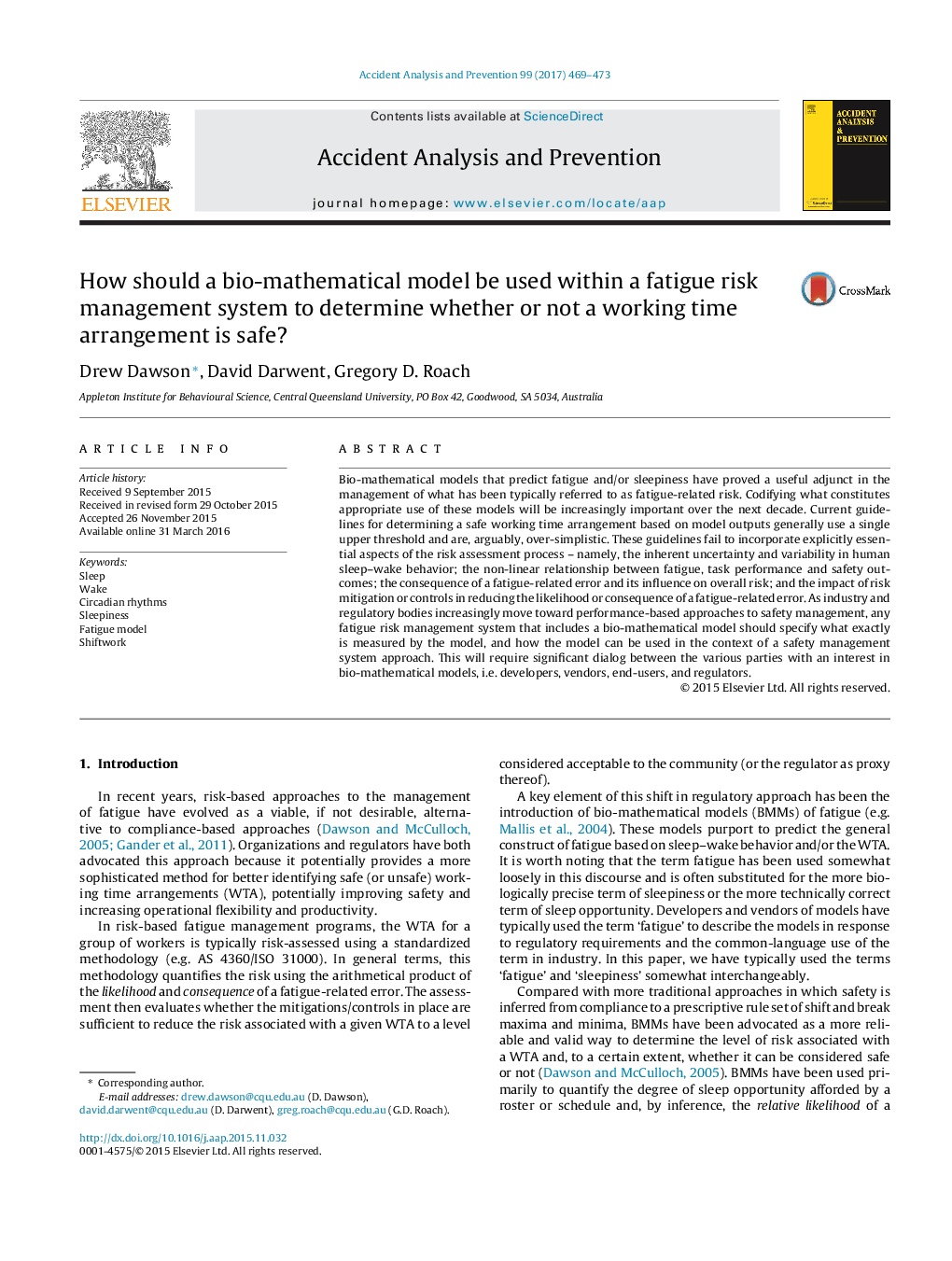| Article ID | Journal | Published Year | Pages | File Type |
|---|---|---|---|---|
| 4978777 | Accident Analysis & Prevention | 2017 | 5 Pages |
Abstract
Bio-mathematical models that predict fatigue and/or sleepiness have proved a useful adjunct in the management of what has been typically referred to as fatigue-related risk. Codifying what constitutes appropriate use of these models will be increasingly important over the next decade. Current guidelines for determining a safe working time arrangement based on model outputs generally use a single upper threshold and are, arguably, over-simplistic. These guidelines fail to incorporate explicitly essential aspects of the risk assessment process - namely, the inherent uncertainty and variability in human sleep-wake behavior; the non-linear relationship between fatigue, task performance and safety outcomes; the consequence of a fatigue-related error and its influence on overall risk; and the impact of risk mitigation or controls in reducing the likelihood or consequence of a fatigue-related error. As industry and regulatory bodies increasingly move toward performance-based approaches to safety management, any fatigue risk management system that includes a bio-mathematical model should specify what exactly is measured by the model, and how the model can be used in the context of a safety management system approach. This will require significant dialog between the various parties with an interest in bio-mathematical models, i.e. developers, vendors, end-users, and regulators.
Related Topics
Physical Sciences and Engineering
Chemical Engineering
Chemical Health and Safety
Authors
Drew Dawson, David Darwent, Gregory D. Roach,
